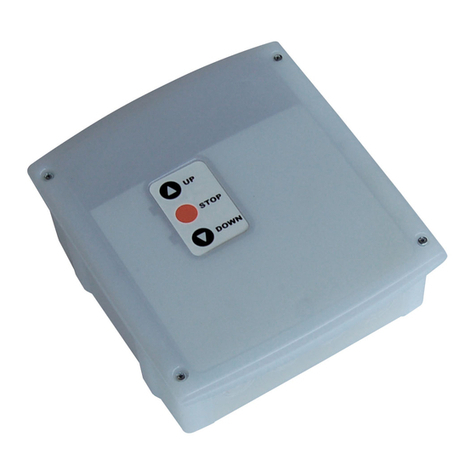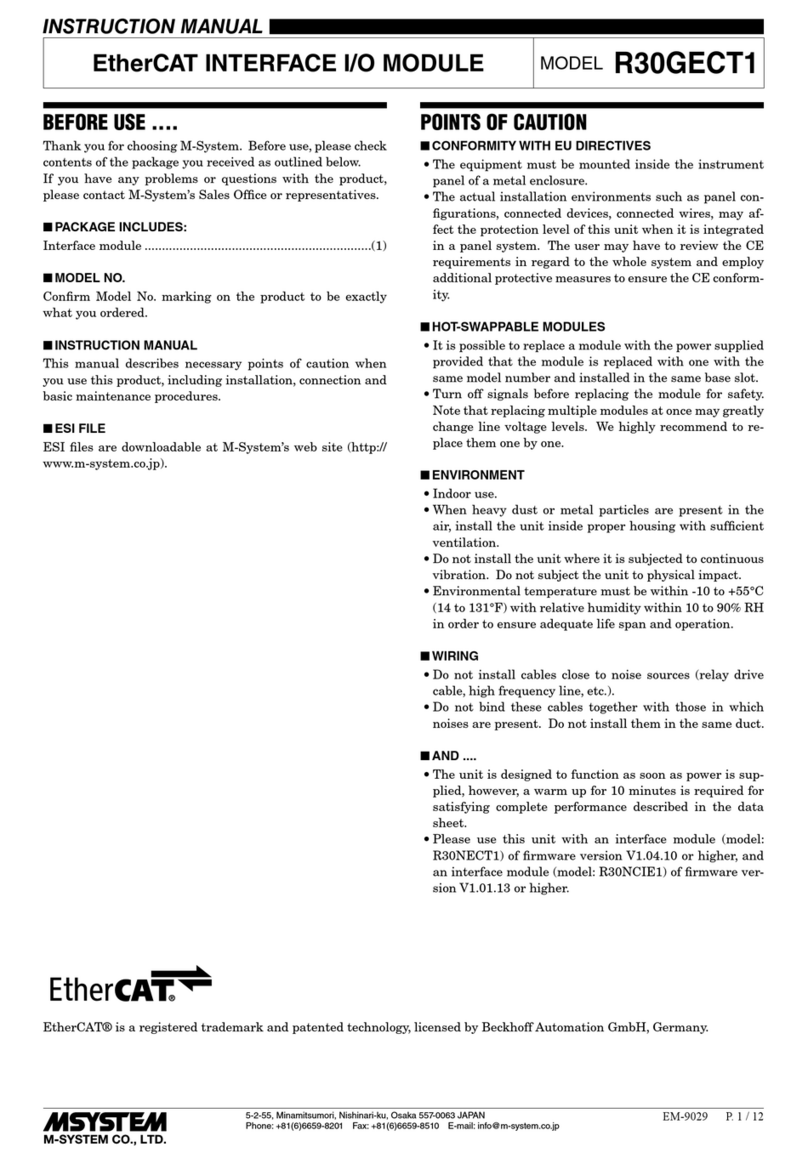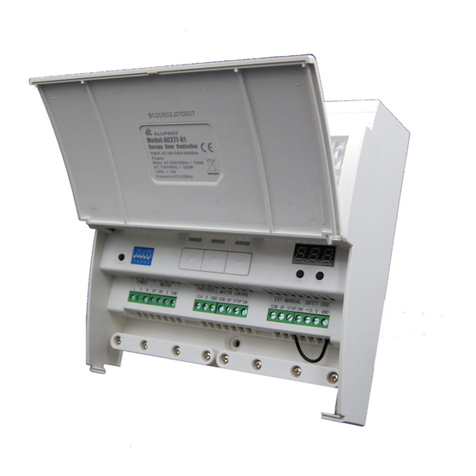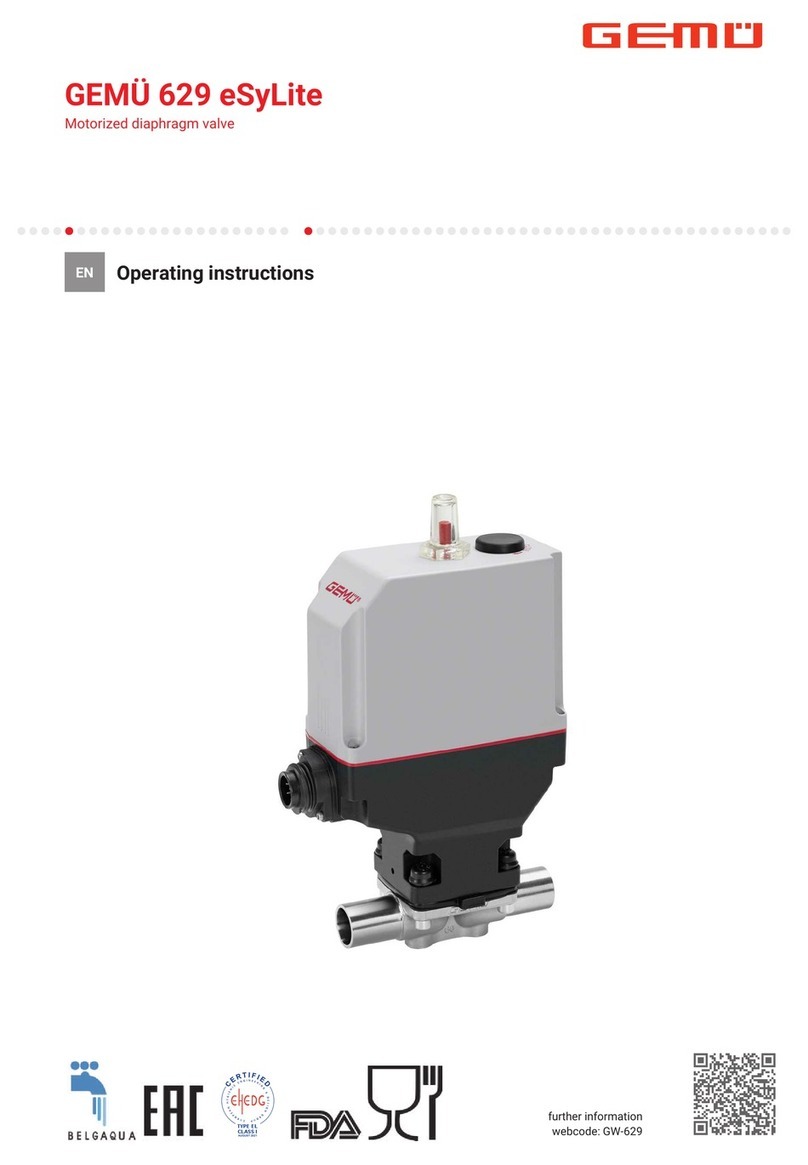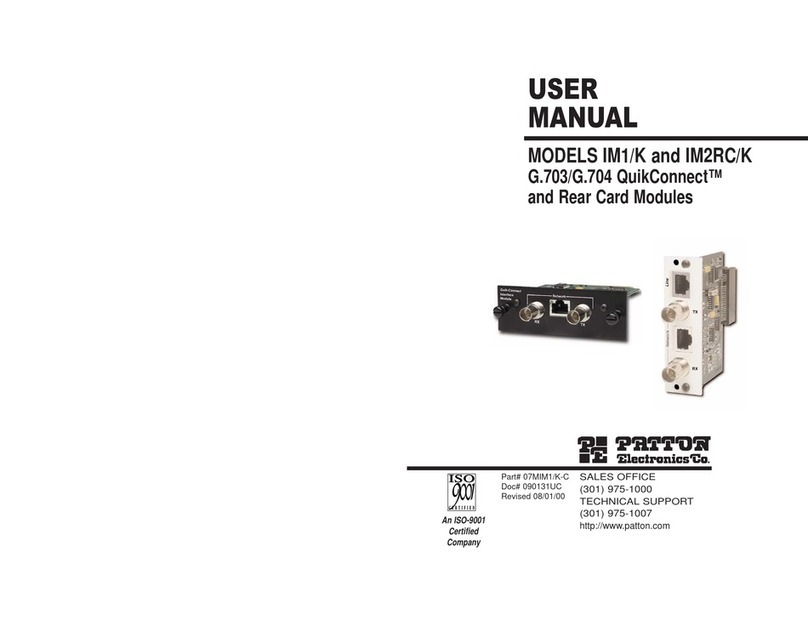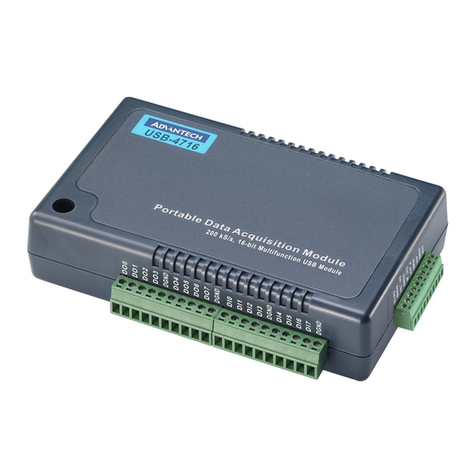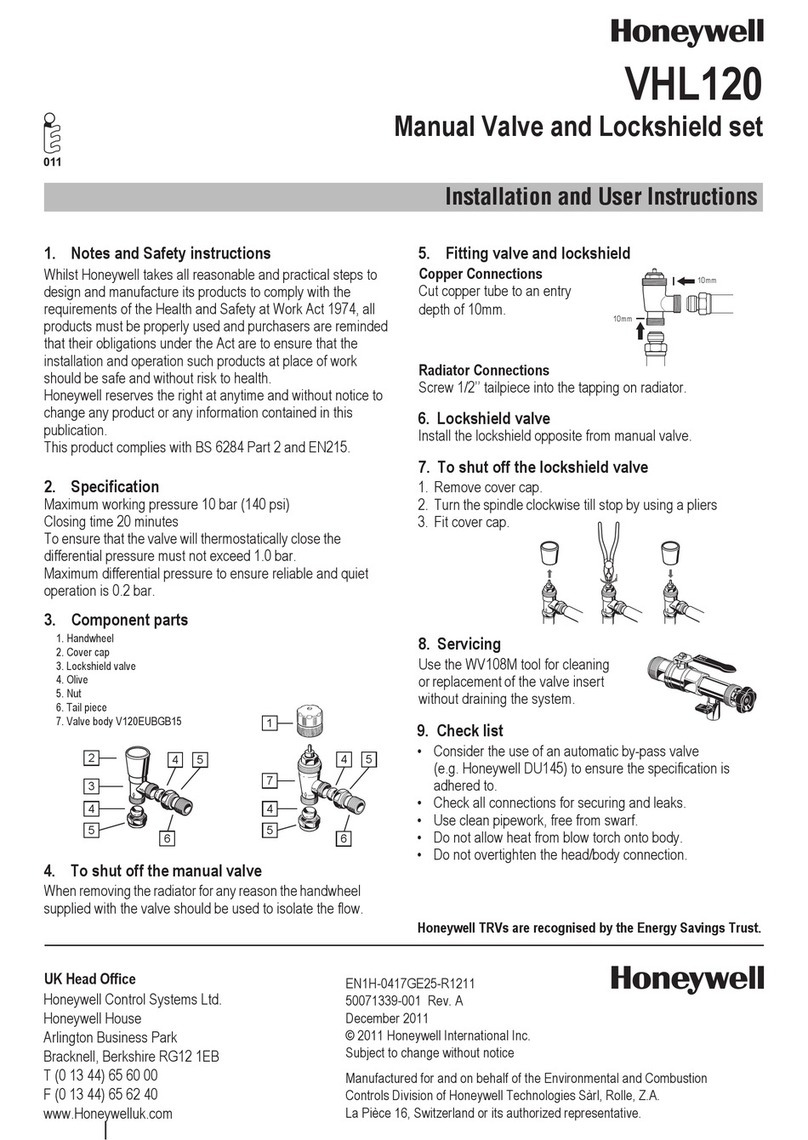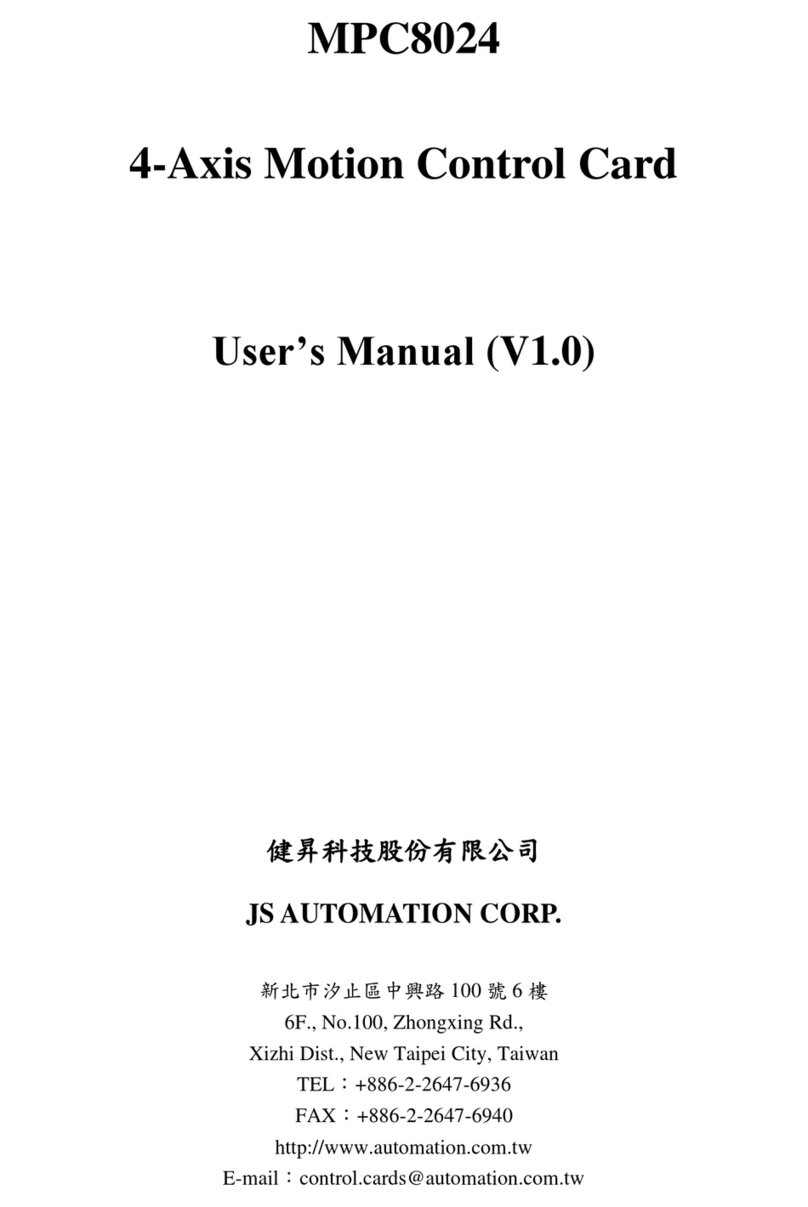Norgren VR10 Installation and operating instructions

Operation & Service Manual
VR10 / VR15
With EtherNet/IP Interface
Before starting work read these instructions.
This manual contains proprietary information. No part of this
publication may be reproduced, transcribed or transmitted
in any form without the written consent of the publisher.
Every eort has been made to ensure that the information
contained in this manual is accurate. All rights reserved.

2
Operation & Service Manual
VR10 / VR15 with EtherNet/IP Interface
Construction & Design is subject to change (A1743-OPM-EP / Rev.004)
Change history:
The change history reflects all changes of the Operation & Service Manual, which were done after
the initial release.
Index
Chapters
Change description
Date
Name
001
All
New Release
27-Nov-2020
GG
002
All
Minor changes about pictures and texts
25-Jan-2021
GG
003
7
MS LED Description change
28-Jan-2021
GG
004
6.2.2
Minor changes about texts
09-Mar-2021
GG
005
All
Minor changes to text
24-Mar-2021
JR
This Operation & Service Manual makes no claims of being complete as it does not cover all
variants of the VR10 / VR15 valve islands.
Therefore, this document is subject to extensions or changes.

3
Operation & Service Manual
VR10 / VR15 with EtherNet/IP Interface
Construction & Design is subject to change (A1743-OPM-EP / Rev.004)
1 CONTENTS
1 CONTENTS .................................................................................................................. 3
2 ABOUT THIS DOCUMENTATION ............................................................................... 5
3 IMPORTANT HINTS ..................................................................................................... 6
3.1 GROUNDING AND EQUIPOTENTIAL BONDING ................................................. 6
4 ELECTRICAL COMPONENTS ..................................................................................... 7
4.1 EtherNet/IP PORT 1 & PORT 2 .............................................................................. 8
4.2 POWER SUPPLY CONNECTOR ........................................................................... 8
4.3 ELECTRICAL DATA ............................................................................................... 9
5
SOLENOID NUMBER, OUTPUT POINT & VALVE STATION MAPPING
.................................. 10
5.1 MAPPING RULES FOR VALVE STATIONS £ 12 ................................................ 10
5.2 MAPPING RULES FOR 12 < VALVE STATIONS £ 24 ........................................ 10
6 COMMISSIONING ...................................................................................................... 11
6.1 EDS FILE INSTALLATION ................................................................................... 11
6.2 HARDWARE CONFIGURATION .......................................................................... 14
6.2.1 Add Valve Island and Configuration ............................................................... 14
6.2.2 Assign IP Address to Valve Island ................................................................. 16
6.2.2.1 IP Address Setting by Remote Control ..................................................... 17
6.2.2.2 IP Address Set by Dial Panels .................................................................. 21
6.2.2.3 DHCP Mode .............................................................................................. 21
6.3 DIGITAL OUTPUTS DATA ................................................................................... 22
6.4 DIGITAL INPUTS DATA ....................................................................................... 24
6.4.1 Overall Status Diagnostics ............................................................................. 26
6.4.2 Short Circuit Diagnostics ............................................................................... 28
6.4.3 Open Load Diagnostics ................................................................................. 30
6.4.4 Cycle Overrun Diagnostics ............................................................................ 32
6.5 PARAMETERIZATION ......................................................................................... 34
6.5.1 Cycle Counter Limit ........................................................................................ 34
6.5.2 Open Load Diagnostics Setting ...................................................................... 36
6.5.3 Fail Safe State Setting ................................................................................... 38
6.5.4 Voltage and Short Circuit Diagnostics ............................................................ 40

4
Operation & Service Manual
VR10 / VR15 with EtherNet/IP Interface
Construction & Design is subject to change (A1743-OPM-EP / Rev.004)
6.6 CYCLE COUNTING DATA ACQUISITION ........................................................... 41
6.7 CYCLE COUNTER RESETTING ......................................................................... 44
7 LED STATUS DESCRIPTION .................................................................................... 48
8 TECHNICAL DATA EtherNet/IP INTERFACE ............................................................ 49
9 CUSTOMER SUPPORT ............................................................................................. 50

5
Operation & Service Manual
VR10 / VR15 with EtherNet/IP Interface
Construction & Design is subject to change (A1743-OPM-EP / Rev.004)
2 ABOUT THIS DOCUMENTATION
This User Guide contains the information to set up and operate VR10 / VR15 valve island with
EtherNet/IP
Interface and to detect and resolve problems.
Note:
In addition to the specific information for the
EtherNet/IP
variants, all data sheets and VR10 / VR15
PROTOCOL / MULTIPOLE SERIES IP65 VERSION Operation & Service Manual are applicable and remain valid.
Refer also to the data sheets on the following web link:
§ https://www.norgren.com
Refer also to the valve island installation instruction in the following document:
§
“VR10 / VR15 PROTOCOL / MULTIPOLE SERIES IP65 VERSION Operation & Service Manual”
• This manual can be found on
https://www.norgren.com/uk/en/technical-support/installation-
maintenance-instructions/valves
Basic information about EtherNet/IP could be found in the following documents:
§
“Technology Overview Series: EtherNet/IP”
•
https://www.odva.org/wp-content/uploads/2020/05/PUB00138R6-Tech-Series-
EtherNetIP.pdf
Network Infrastructure for EtherNet/IP could be found in the following documents:
§
"EtherNet/IP Network Infrastructure Guide”
•
https://www.odva.org/wp-
content/uploads/2020/05/PUB00035R0_Infrastructure_Guide.pdf
Further information about EtherNet/IP is available on following websites:
§
https://www.odva.org/
§
https://www.odva.org/technology-standards/document-library/

6
Operation & Service Manual
VR10 / VR15 with EtherNet/IP Interface
Construction & Design is subject to change (A1743-OPM-EP / Rev.004)
3 IMPORTANT HINTS
3.1 GROUNDING AND EQUIPOTENTIAL BONDING
Proper grounding and equipotential bonding are very important to protect against electromagnetic
interferences in EtherNet/IP networks. To reduce potential impact, grounding of the EtherNet/IP
cable screen should be done at both ends of every cable (i.e. at each device). Equipotential
bonding ensures that the ground potential is identical throughout the entire EtherNet/IP network
and is essential to avoid equipotential bonding currents, which could otherwise flow through the
EtherNet/IP cable screen. Please refer for further details to the “
Network Infrastructure for
EtherNet/IP
” provided by the
EtherNet/IP
user organization ODVA (https://www.odva.org/).
For proper grounding please use the earth screw (M4) on the upper side of the valve island. For
easy reference see item 6 in chapter 4.

7
Operation & Service Manual
VR10 / VR15 with EtherNet/IP Interface
Construction & Design is subject to change (A1743-OPM-EP / Rev.004)
4 ELECTRICAL COMPONENTS
1- Port 1 for EtherNet/IP
(M12 x 1 | Female | 4 – pin | D – coded)
2- Port 2 for Ethernet/IP
(M12 x 1 | Female | 4 – pin | D – coded)
3- PWR: Power supply connector
(M12 x 1 | Male | 5 – pin | A – coded)
4- Status LEDs
5- IP address switch.
6- Earth screw (M4)
7- Valve status LEDs

8
Operation & Service Manual
VR10 / VR15 with EtherNet/IP Interface
Construction & Design is subject to change (A1743-OPM-EP / Rev.004)
4.1 EtherNet/IP PORT 1 & PORT 2
M12 / 4 pins / Female Connector / D-coded
Pin No.
Function
1
Transmission Data + (TD +)
2
Receive Data + (RD +)
3
Transmission Data - (TD -)
4
Receive Data - (RD -)
4.2 POWER SUPPLY CONNECTOR
§ Pin allocating of power supply connector
M12 / 5 pins / Male Connector / A-coded
Pin No.
Function
1
L1 (VB +) 24V electronics power supply
2
N2 (VA -) 0V valves power supply
3
N1 (VB -) 0V electronics power supply
4
L2 (VA +) 24V valves power supply
5
FE (functional earth)
§ Power supply connector wiring diagram
Notes:
§ Make sure electronics power, valves power and their polarities are connected to correct pins
respectively before switching on.
§ Select the appropriate cables to mate with the connectors mounted on the control module.
§ Connect the earth screw to ground.
24V DC
Valve Island
24V DC

9
Operation & Service Manual
VR10 / VR15 with EtherNet/IP Interface
Construction & Design is subject to change (A1743-OPM-EP / Rev.004)
4.3 ELECTRICAL DATA
Specification
Remark
Valve voltage range (VA)
24VDC +10%/-5%
PELV
Electronics voltage range (VB)
24VDC +/-10%
PELV
Maximum currents
VA: n × 40 mA
VB: < 100 mA
n = number of solenoids
Voltages are galvanic decoupled
Yes
---
Protection against polarity reversal
Yes
---
Overcurrent protection VB, VA
Irreversible
---
Output polarity
PNP
---

10
Operation & Service Manual
VR10 / VR15 with EtherNet/IP Interface
Construction & Design is subject to change (A1743-OPM-EP / Rev.004)
5 SOLENOID NUMBER, OUTPUT POINT & VALVE STATION MAPPING
5.1 MAPPING RULES FOR VALVE STATIONS
£
12
§ If valve stations ≤ 12, 2 solenoid numbers are always reserved for each valve station. *
Detailed allocation is shown as below:
Station
#1
#2
#3
#4
#5
#6
#7
#8
#9
#10
#11
#12
Solenoid A
(14 Solenoid)
Sol.01
Sol.03
Sol.05
Sol.07
Sol.09
Sol.11
Sol.13
Sol.15
Sol.17
Sol.19
Sol.21
Sol.23
Output
0
Output
2
Output
4
Output
6
Output
8
Output
10
Output
12
Output
14
Output
16
Output
18
Output
20
Output
22
Solenoid B
(12 Solenoid)
Sol.02
Sol.04
Sol.06
Sol.08
Sol.10
Sol.12
Sol.14
Sol.16
Sol.18
Sol.20
Sol.22
Sol.24
Output
1
Output
3
Output
5
Output
7
Output
9
Output
11
Output
13
Output
15
Output
17
Output
19
Output
21
Output
23
Notes:
* For valve station with single solenoid, only Solenoid A (14 Solenoid) is connected.
Consider the one which is closest to control module as 1st station (Station #1)
5.2 MAPPING RULES FOR 12
<
VALVE STATIONS
£
24
§ If 12 < valve stations ≤ 24, special rules are required since only 1 solenoid number is
allocated to valve station with single solenoid:
• Sequence all solenoids following the rules below by starting from 1st station which is the
station closest to control module:
o If 1st station is with double solenoids, sequence solenoid A as Sol.01, solenoid B as
Sol.02, following 2nd station solenoid A as Sol.03, solenoid B as Sol.04……
o If 1st station is with single solenoid, sequence solenoid A as Sol.01, following 2nd
station solenoid A as Sol.02, solenoid B as Sol.03……
o If a station is originally configured as blank, always 2 solenoid numbers are allocated.
o The rest of stations should also adhere to the sequence rules above.
• A 16-station 24 solenoids valve island example is shown below:
Double
Solenoids
Double
Solenoids
Single
Solenoid
Single
Solenoid
Double
Solenoids
Double
Solenoids
Single
Solenoid
Double
Solenoids
Single
Solenoid
Double
Solenoids
Single
Solenoid
Double
Solenoids
Single
Solenoid
Single
Solenoid
Double
Solenoids
Single
Solenoid
Station
#1
#2
#3
#4
#5
#6
#7
#8
#9
#10
#11
#12
#13
#14
#15
#16
Solenoid A
(14 Solenoid)
Sol.01
Sol.03
Sol.05
Sol.06
Sol.07
Sol.09
Sol.11
Sol.12
Sol.14
Sol.15
Sol.17
Sol.18
Sol.20
Sol.21
Sol.22
Sol.24
Output
0
Output
2
Output
4
Output
5
Output
6
Output
8
Output
10
Output
11
Output
13
Output
14
Output
16
Output
17
Output
19
Output
20
Output
21
Output
23
Solenoid B
(12 Solenoid)
Sol.02
Sol.04
--*
--*
Sol.08
Sol.10
--*
Sol.13
--*
Sol.16
--*
Sol.19
--*
--*
Sol.23
--*
Output
1
Output
3
Output
7
Output
9
Output
12
Output
15
Output
18
Output
22
Note:
* For valve station with single solenoid, only Solenoid A (14 Solenoid) is allocated & connected.
Consider the one which is closest to control module as 1st station (Station #1).

11
Operation & Service Manual
VR10 / VR15 with EtherNet/IP Interface
Construction & Design is subject to change (A1743-OPM-EP / Rev.004)
6 COMMISSIONING
Notes:
1. The method of module installation strongly depends on the configuration software. Please refer to the configuration
software manual.
2. All examples in this document are made with following tools,
Hardware: Allen-Bradley PLC CPU 1756-L61, Ethernet/IP Module 1756-ENBT.
Software (Rockwell Automation): BootP-DHCP, RS-Linx Classic, RS Logix 5000.
6.1 EDS FILE INSTALLATION
A device description file is needed for configuration of valve island. The ESD file is provided by
NORGREN and can be downloaded from the following web link:
§ https://www.norgren.com/uk/en/technical-support/software
The EDS (Electronic Data Sheet) file could be used for all variants VR10 / VR15:
§ “NORGREN-VR1X-EP-Vxx-JJJJMMDD.eds”
Note: “JJJJMMDD” (JJJJ-year, MM-month, DD-day) is date of release, “Vxx” (xx-version number) is version of release.
The EDS file can be installed inside the engineering tool of the EtherNet/IP controller by following
steps in RS Logix 5000.:
§ Click “Tools” menu.
§ Choose “EDS Hardware Installation
Tool”. Then click on “Next” in
Rockwell Automation’s EDS wizard
window.
§ Select “Register an EDS file(s)”.
Click Next. (Tag 1-2)

12
Operation & Service Manual
VR10 / VR15 with EtherNet/IP Interface
Construction & Design is subject to change (A1743-OPM-EP / Rev.004)
§ In next window, click on
“Register a single file”. (Tag 3)
§ “Browse” to the source path
where EDS file is stored, then
click on “Next”. (Tag 4-5)
§ Click “Next” on the EDS File
Installation Test Result window.
(Tag 6)

13
Operation & Service Manual
VR10 / VR15 with EtherNet/IP Interface
Construction & Design is subject to change (A1743-OPM-EP / Rev.004)
§ Click “Next” by accepting the default
icon of Norgren valve island. (Tag 7)
§ Click “Next” on the task summary
window. (Tag 8)
§ Click Finish. (Tag 9)
§ Now the EDS file is added to the
engineering tool.

14
Operation & Service Manual
VR10 / VR15 with EtherNet/IP Interface
Construction & Design is subject to change (A1743-OPM-EP / Rev.004)
6.2 HARDWARE CONFIGURATION
Note: please create a new project or open an existing project before configuring any hardware.
Please make sure the EtherNet/IP module has been configured correctly before add valve island
moudle in the “Controller Organizer” window in RS Logix 5000 as below.
6.2.1 Add Valve Island and Configuration
§ Find the EtherNet/IP module in controller
Organizer. (Tag 1)
§ Right-clicking on “Ethernet”. (Tag 2)
§ Choose “New Module”. (Tag 3)
§ In the “Select Module Type” window,
filter by key word “Norgren” if too
many module types in “Catalog”.
(Tag 4)
§ Select correct module type. (Tag 5)
§ Click create. (Tag 6)

15
Operation & Service Manual
VR10 / VR15 with EtherNet/IP Interface
Construction & Design is subject to change (A1743-OPM-EP / Rev.004)
§ In the “New Module” window, select
“General” tab, input Name and IP
address. (Tag 7-8)
§ Select “Connection” tab. (Tag 9)
§ Set “Requested Packet Interval (RPI)”
greater than or equal to 10ms. The RPI
times has a direct impact to the busload.
(Tag 10)
§ Click “OK”. (Tag 11)
Note: The lower the cycle times, the higher the
busload
§ Now the valve island is added to the tree
“Controller Organizer”.

16
Operation & Service Manual
VR10 / VR15 with EtherNet/IP Interface
Construction & Design is subject to change (A1743-OPM-EP / Rev.004)
6.2.2 Assign IP Address to Valve Island
VR10/VR15 provides several options to assign IP address to valve island by removing the window
to set the rotary and DIP switch with a 2mm slotted screwdriver during power off.
The detail functions of the switches are shown as below:
Note: VR10/15 supports static and DHCP IP assignment method, for users of other IP assignment
methods (such as BOOTP), please refer to 6.2.2.1 with BOOTP_DHCP server or DHCP server
which is typically provided by PLC OEM (such as BOOTP_DHCP tool within RS Logix 5000
software package from Rockwell Automation) to assign IP address.
IP address dial panels:
0 0 0: IP address set by Remote Control
2 5 5: IP address set by DHCP
001-254: IP address set by dial panel.
Address from 192.168.*. 001 to 192.168.*. 254
“*” is set by “setting switch 1”
Settings - Select additional IP address range.
Switch 1 is “ON” side:
IP address range: 192.168.1.001 to 192.168.1.254
Switch 1 is at opposite “ON” side:
IP address range: 192.168.0.001 to 192.168.0.254
Notes:
001-254 is set by dial panels.
Switch 1 does not take effect under Remote control
and DHCP mode.
Switch 2 is not used.
ON side

17
Operation & Service Manual
VR10 / VR15 with EtherNet/IP Interface
Construction & Design is subject to change (A1743-OPM-EP / Rev.004)
6.2.2.1 IP Address Setting by Remote Control
In remote control mode, IP address can be set by DHCP server, or TCP/IP Interface Object.
§ IP address set by DHCP Server
VR10/VR15 is set as a DHCP client in remote control mode by default.
IP Address must be assigned using a DHCP server or a similar tool.
The IP address must be set again after each power cycle.
The following example shows the IP Address assignment using Rockwell Automations tool
BOOTP_DHCP.
In the BOOTP_DHCP tool, making sure network adaptor which is in the network is selected.
Then follow the steps below:
• In the “commissioning tool” window,
click Add Relation. (Tag 1)
• Enter Client Address (MAC), IP
Address and Hostname in the “New
Entry” window, Click OK. (Tag 2-3)
• The relation now is added.
• Select the added relation. (Tag 4)
• Click “Enable BOOTP/DHCP”. (Tag 5)
• The VR10/VR15 valve island will
appear with assigned IP Address in
“Discovery History” list if address
assignment was successful. (Tag 6)

18
Operation & Service Manual
VR10 / VR15 with EtherNet/IP Interface
Construction & Design is subject to change (A1743-OPM-EP / Rev.004)
§ Static IP Address assignment
Static IP address must be done once and is valid after power cycles.
The following example shows how to set static IP address by Rockwell Automation tool
BOOTP/DHCP.
• Click Add Relation. (Tag 1)
• Enter Client Address (MAC), IP
Address and Hostname. (Tag 2)
• Click OK. (Tag 3)
• Select the added relation. (Tag 4)
• Click “Enable BOOTP/DHCP”. (Tag 5)
• The VR10/VR15 valve island will
appear with assigned IP Address in
“Discovery History” list if address
assignment was successful. (Tag 6)
• Right-clicking on the relation. (Tag 7)
• Select “Disable BOOTP/DHCP”.
(Tag 8)

19
Operation & Service Manual
VR10 / VR15 with EtherNet/IP Interface
Construction & Design is subject to change (A1743-OPM-EP / Rev.004)
• “[Disable DHCP] command
successful” will appear in the
Errors and warnings status.

20
Operation & Service Manual
VR10 / VR15 with EtherNet/IP Interface
Construction & Design is subject to change (A1743-OPM-EP / Rev.004)
§ Static IP address can also set by TCP/IP Interface Object.
The Read/Write access to the TCP/IP Interface Object is done via the Explicit Messages
communication method.
The configuration method is set up with the bits0-3 in attribute 3. Please use the statically
assigned IP configuration set up value “0” for those bits.
Bit(s):
Called:
Definition
0-3
Configuration
Method
Determines how
the device shall
obtain its IP-
related
configuration
0 = The device shall use statically assigned IP configuration
values.
1 = Not used.
2 = The device shall obtain its interface configuration values
via DHCP.
3-15 = Reserved for future use.
4
DNS Enable
If 1 (TRUE), the device shall resolve host names by querying a DNS server.
5-31
Reserved
Reserved for future use and shall be set to zero.
Attribute 3 of TCP/IP Interface Object: Configuration Method
Attribute 5 contains the configuration parameters required to operate as a TCP/IP node. At
least network address and network mask need to be configured.
Name
Meaning
IP address
The device’s IP address.
Network mask
The device’s network mask. The network mask is used when the IP network has been
partitioned into subnets. The network mask is used to determine whether an IP address is
located on another subnet.
Gateway address
The IP address of the device’s default gateway. When a destination IP address is on a
different subnet, packets are forwarded to the default gateway for routing to the destination
subnet.
Name server
The IP address of the primary name server. The name server is used to resolve host
names. For example, that might be contained in a CIP connection path.
Name server 2
The IP address of the secondary name server. The secondary name server is used when
the primary name server is not available or is unable to resolve a host name.
Domain name
The default domain name. The default domain name is used when resolving host names
that are not fully qualified. For example, if the default domain name is “odva.org”, and the
device needs to resolve a host name of “plc”, then the device will attempt to resolve the host
name as “plc.adva.org”.
Attribute 5 of TCP/IP Interface Object: Interface Configuration
Other manuals for VR10
3
This manual suits for next models
1
Table of contents
Other Norgren Control Unit manuals
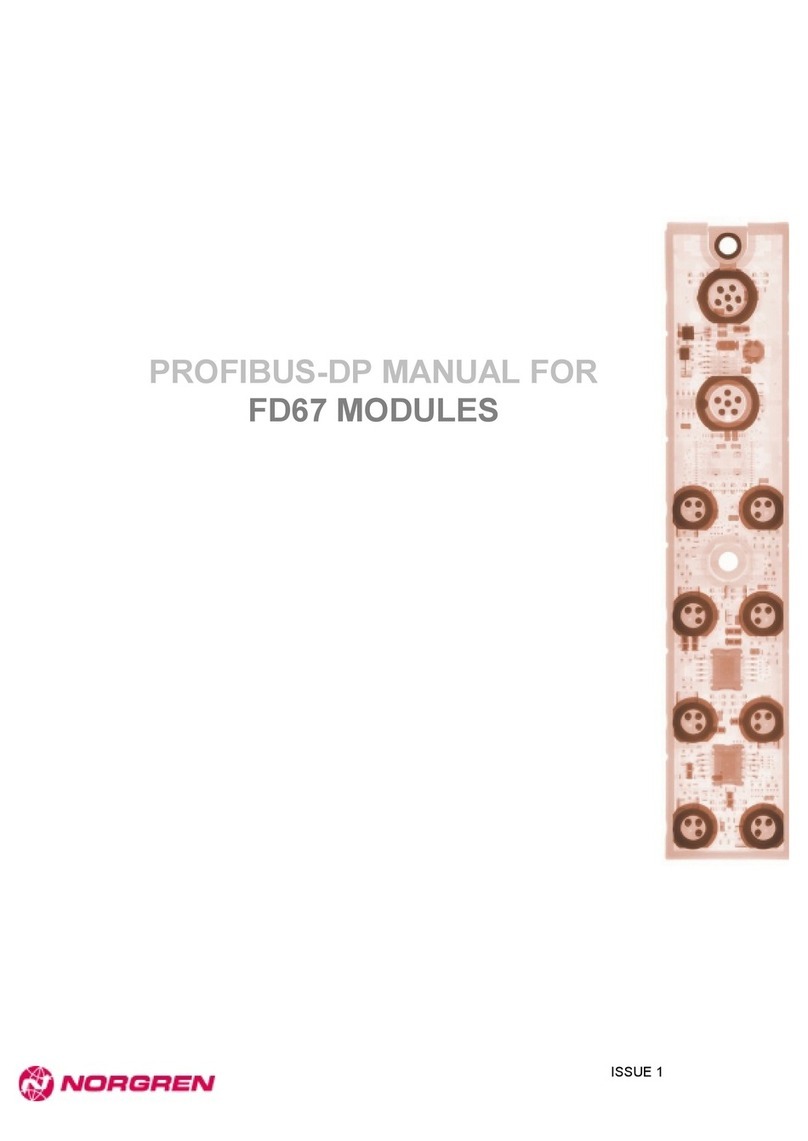
Norgren
Norgren FD67 User manual
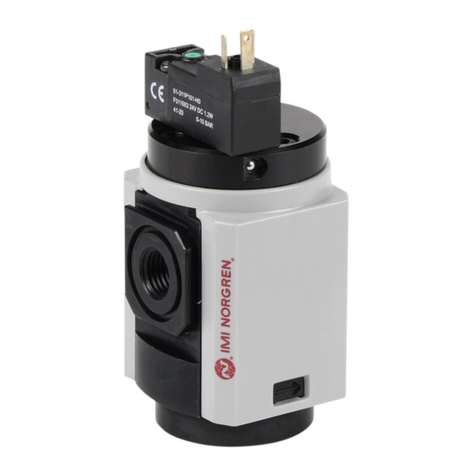
Norgren
Norgren 82 Series User manual
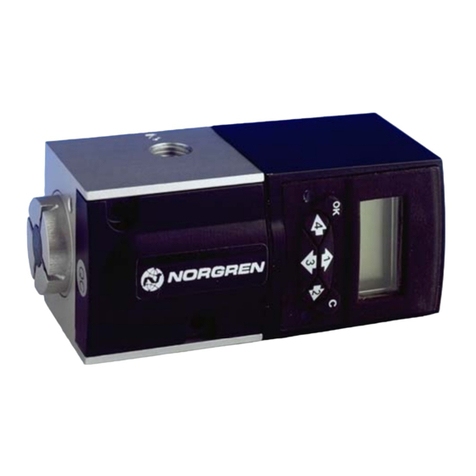
Norgren
Norgren VP51 User manual
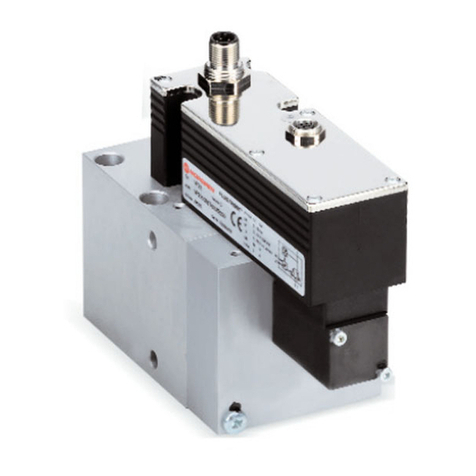
Norgren
Norgren VP23 Series User manual

Norgren
Norgren VP60 Series User manual
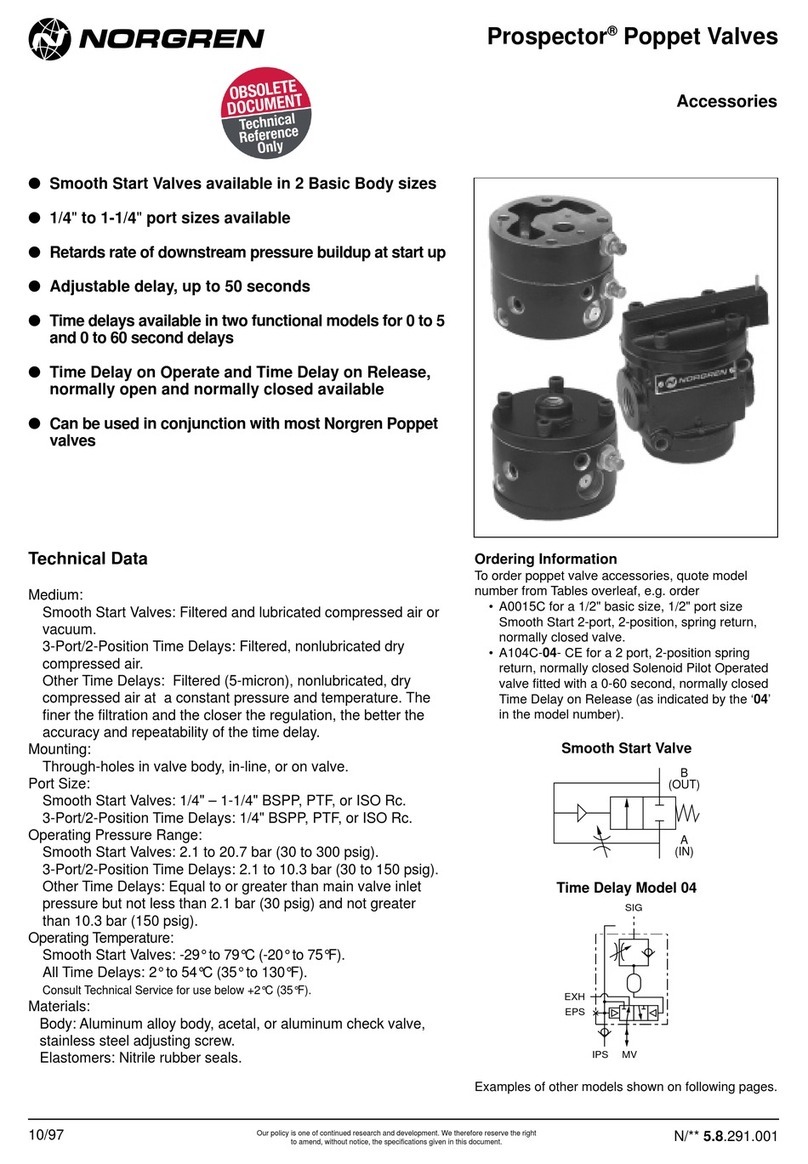
Norgren
Norgren Prospector A00 5A Series User manual
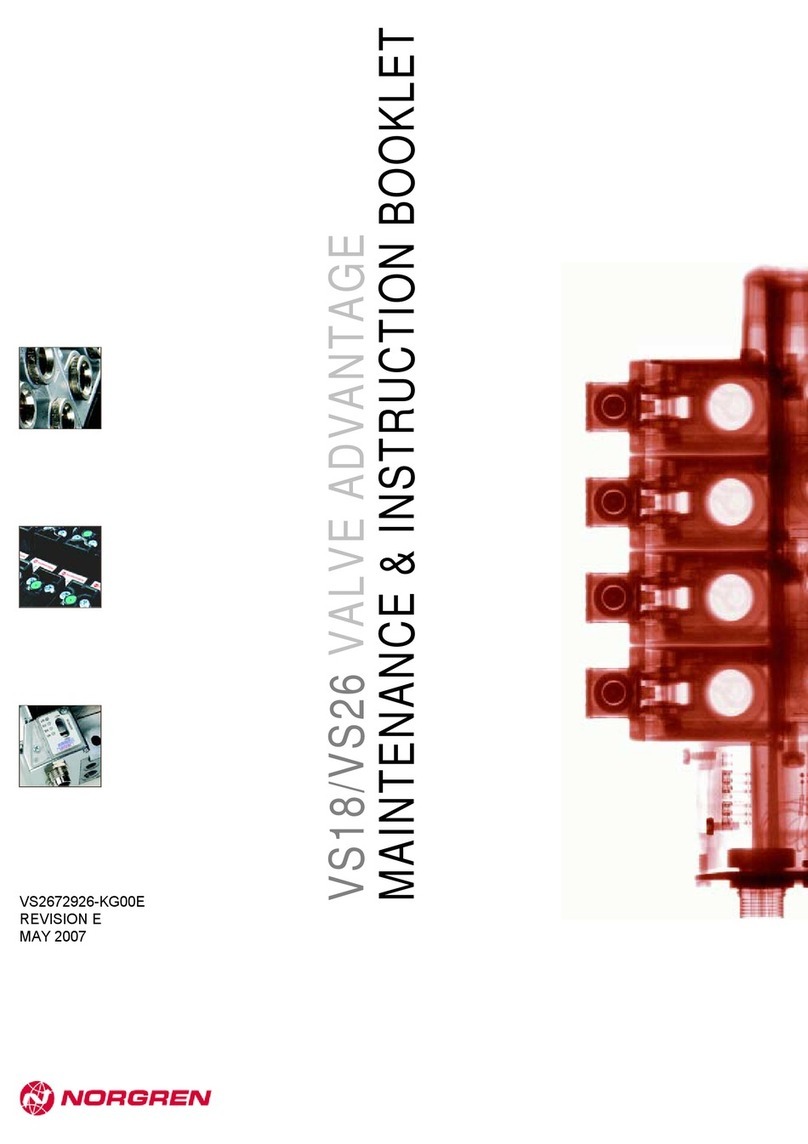
Norgren
Norgren VS18 Manual
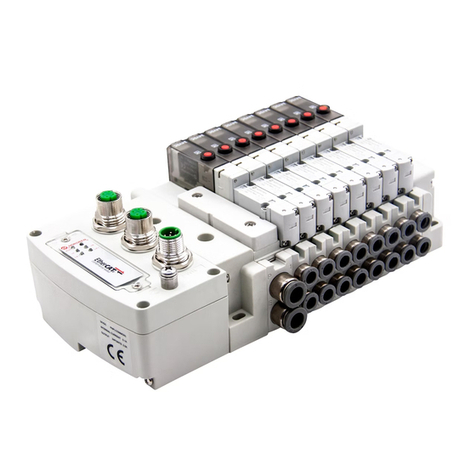
Norgren
Norgren VR10 Instruction Manual

Norgren
Norgren HERION G1/4 User manual
Popular Control Unit manuals by other brands

Ametek
Ametek Z-tron IV Installation and operating instructions
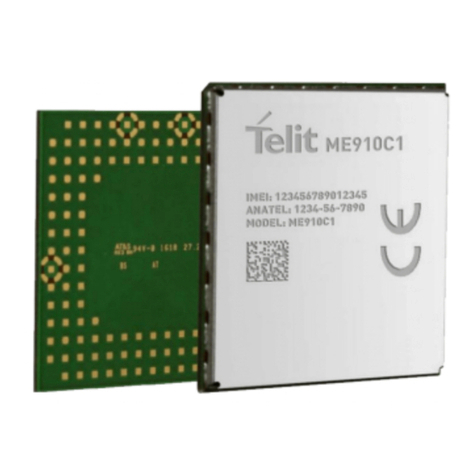
Telit Wireless Solutions
Telit Wireless Solutions ME910C1 Series user guide
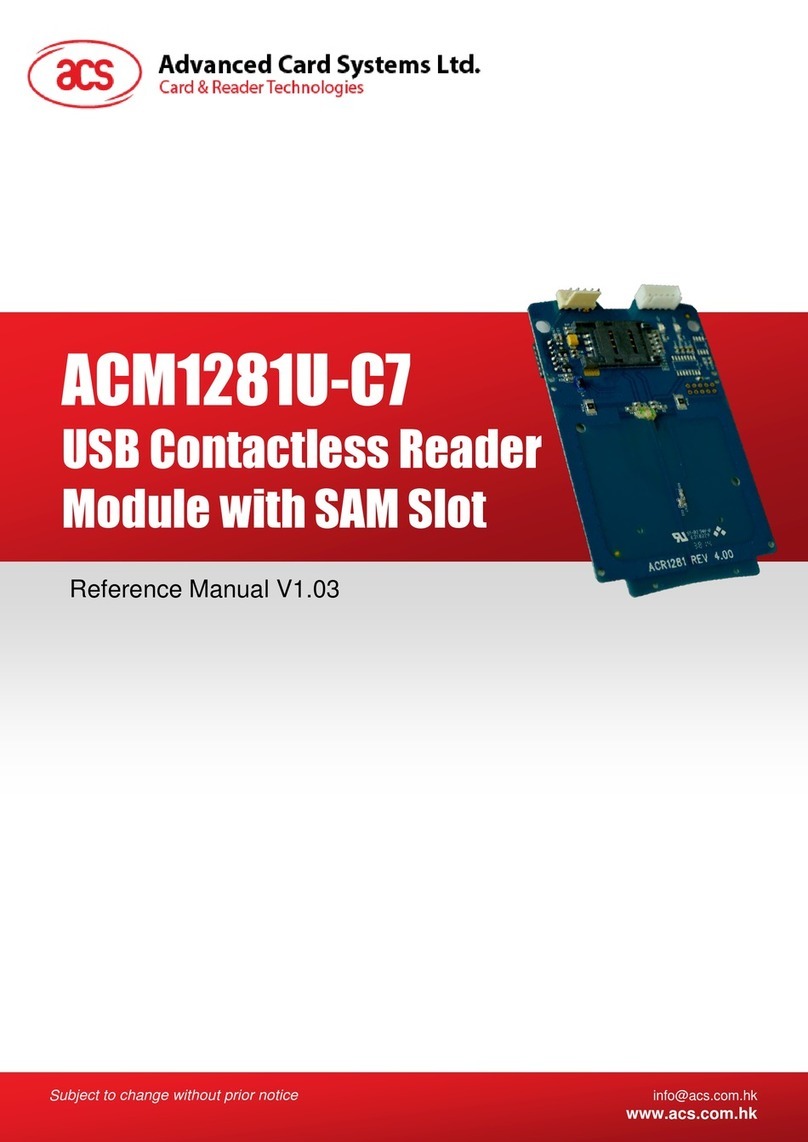
ACS
ACS ACM1281U-C7 Reference manual
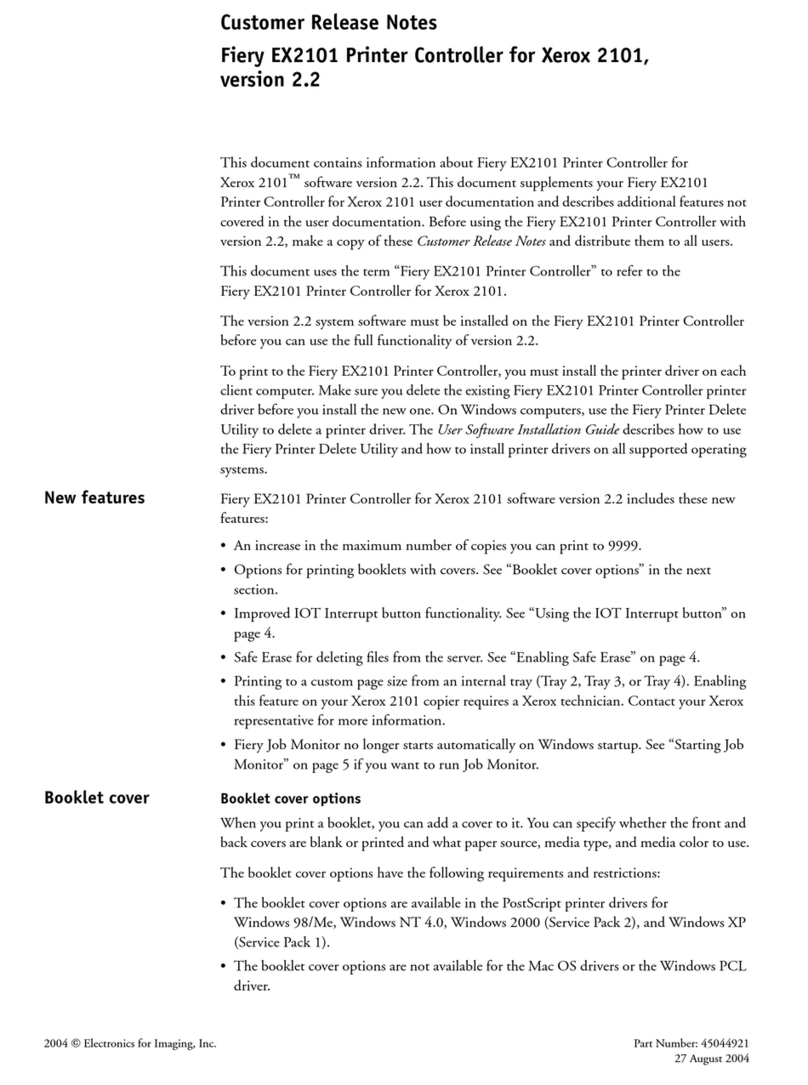
Xerox
Xerox 2101 Customer release notes

Vision tools
Vision tools MDL600 Technical manual
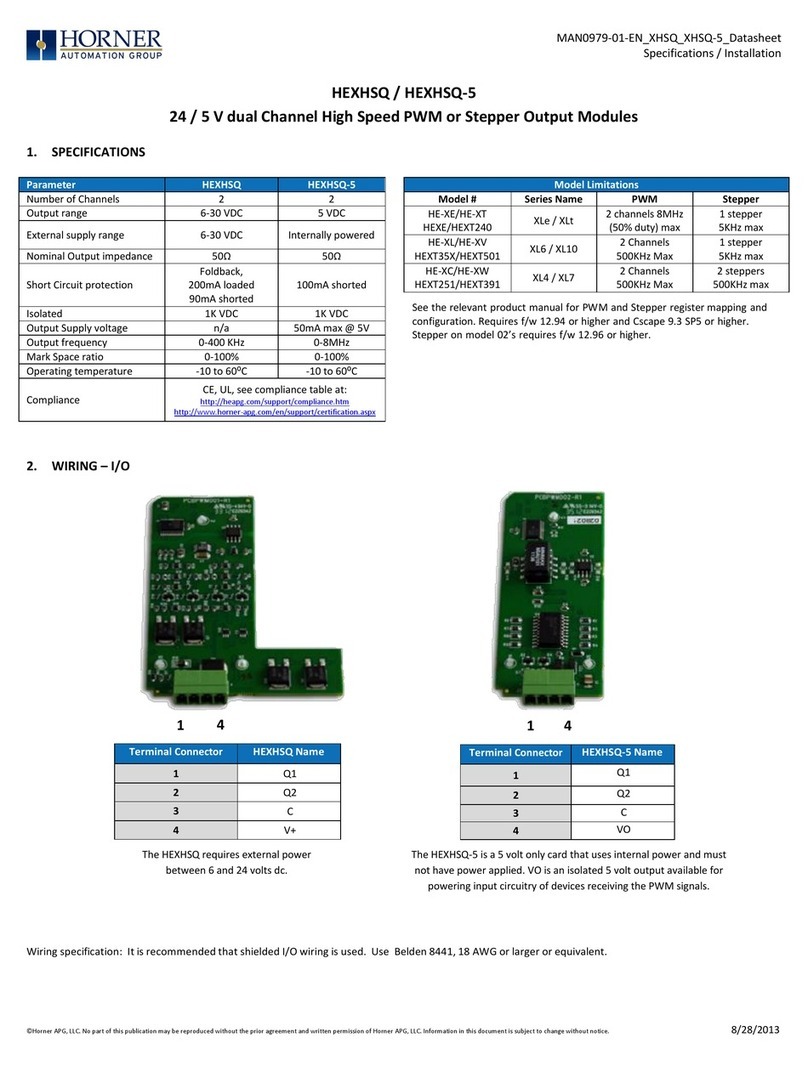
HORNER
HORNER HEXHSQ Specifications & installation
